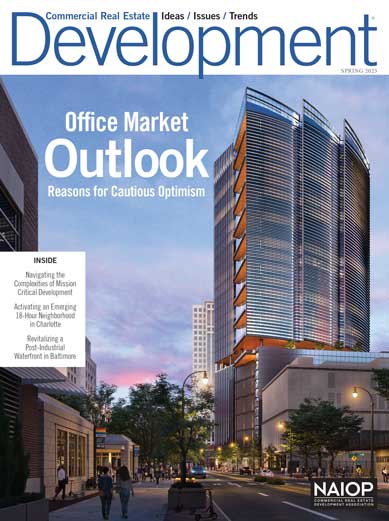There's Still a Need for Parking Audits
Despite technological advances, thieves can find loopholes that hurt the bottom line.
The latest version expands on a commitment to healthy, energy-efficient buildings.
Despite technological advances, thieves can find loopholes that hurt the bottom line.
Think differently and collaborate with city officials to smooth traffic issues and monitor construction activity.
Developers must balance contracts, intellectual property issues, government involvement and other factors when commissioning pieces for a project.
At N.C. State University in Raleigh, a building designed around a state-of-the-art textile machine also accommodates typical office and lab tenants, but getting to the finish line wasn’t easy.
A warehouse/fulfillment complex in New Jersey shows the economic potential for infill redevelopment in places once considered environmentally unsalvageable.
An assortment of brief facts and figures about new and noteworthy development projects.
Download the Winter 2018/2019 Issue of Development
Download the Fall 2018 Issue of Development
Download the Summer 2018 Issue of Development
 Summer 2025 Issue
Summer 2025 Issue
Development’s summer 2025 issue explores experiential retail and the brick-and-mortar resurgence. Also featured: a modern warehouse campus in Toronto that honors its manufacturing heritage; a coalition of Oregon real estate organizations working to revitalize downtown Portland; and the creative capital stack strategy behind a mixed-use project in West Baltimore.
 Spring 2025 Issue
Spring 2025 Issue
The spring 2025 issue offers insights about where the office market might be heading over the coming year, explores the complexities of mission critical development, and provides detailed looks at two transformative mixed-use projects: The Bowl at Ballantyne in Charlotte and Baltimore Peninsula in Maryland.
 Winter 2024/2025 Issue
Winter 2024/2025 Issue
Development magazine’s winter issue delves into the evolving uses of artificial intelligence in the commercial real estate industry, from lease management and building operations to portfolio assessment and data analysis.
